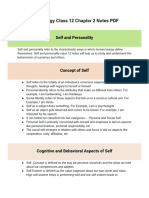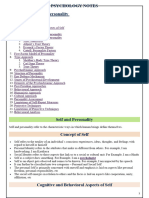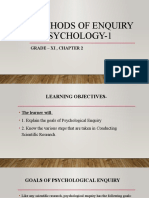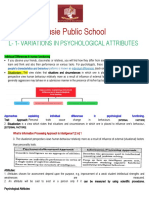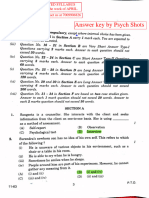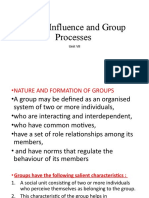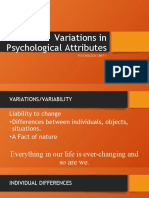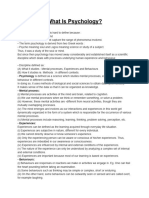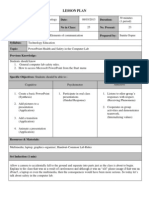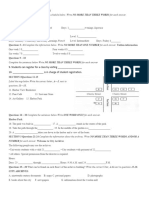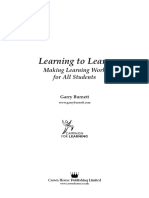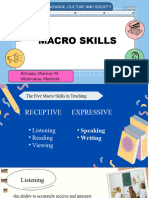100% found this document useful (4 votes)
6K views7 pagesChapter 1 - Variations in Psychological Attributes Notes
This document discusses individual differences in human attributes and intelligence. It covers several key points:
1. Variability among individuals is natural, and psychologists study differences in characteristics and behaviors. Situations also influence behavior.
2. Intelligence is assessed using formal standardized tests and informal open-ended methods. It involves capacities like reasoning, problem-solving, and understanding.
3. Many theories of intelligence have been proposed, including those focusing on general cognitive abilities, specific mental processes, multiple types of intelligence, and the interaction of biological and environmental factors. Intelligence involves complex cognitive functions and is difficult to define precisely.
Uploaded by
sakshikarn0207Copyright
© © All Rights Reserved
We take content rights seriously. If you suspect this is your content, claim it here.
Available Formats
Download as PDF, TXT or read online on Scribd
100% found this document useful (4 votes)
6K views7 pagesChapter 1 - Variations in Psychological Attributes Notes
This document discusses individual differences in human attributes and intelligence. It covers several key points:
1. Variability among individuals is natural, and psychologists study differences in characteristics and behaviors. Situations also influence behavior.
2. Intelligence is assessed using formal standardized tests and informal open-ended methods. It involves capacities like reasoning, problem-solving, and understanding.
3. Many theories of intelligence have been proposed, including those focusing on general cognitive abilities, specific mental processes, multiple types of intelligence, and the interaction of biological and environmental factors. Intelligence involves complex cognitive functions and is difficult to define precisely.
Uploaded by
sakshikarn0207Copyright
© © All Rights Reserved
We take content rights seriously. If you suspect this is your content, claim it here.
Available Formats
Download as PDF, TXT or read online on Scribd
/ 7

